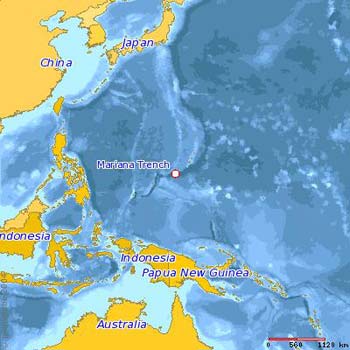|
|
Voyage to the Abyss
back to news
The Woods Hole Oceanographic Institution (WHOI) contracted Kraft TeleRobotics to design and build a custom engineered manipulator arm for their hybrid remotely operated vehicle (HROV) Nereus. With a depth capability of 11000 meters, Nereus will be the first truly cost-effective undersea vehicle system capable of performing meaningful science in the most inaccessible region on earth.
Man and machine have traveled to the very bottom of the ocean, more than 36,000 feet beneath the surface, only a few times. Once in 1960 when Jacques Piccard dove to the bottom of the Marianas Trench in the U.S. Navy submersible Trieste, a remarkable feat, and some 35 years later when the Japanese deep diving ROV "Kaiko" successfully completed several dives to the ocean's greatest depth. Both events represent a great technological achievement, however, in each case the cost was prohibitive, equating to millions of dollars per visit. Nereus will change all that through the implementation of advanced materials technology and state-of-the-art sub sea robotics. For the very first time ocean scientists will have an affordable means to explore the ocean's abyss.
 Image curtosey of Planiglobe Nereus will be called upon to perform a wide variety of tasks using its on board manipulator arm. Among the most demanding of these tasks will be the collecting of biological, geological and fluid samples, all of which must be accomplished with the utmost of efficiency. When operating at 11000 meters, vehicle payload is at a premium, and Nereus must complete its missions within the energy limits of its on-board battery pack. In meeting these challenges, Kraft TeleRobotics designed and built a lightweight high efficiency manipulator, capable of completing demanding manipulative tasks while consuming as little power as possible.
Although a lightweight efficient design was mandatory, the speed with which the manipulator arm will be able to complete specific tasks will ultimately play the largest role in reducing overall power consumption. Kraft manipulator arms have found wide spread use within the ocean sciences community and gained an earned reputation for delivering exceptional productivity at the sea floor. A highly intuitive method of control, better kinematics, and superior responsiveness to operator commands, sets Kraft manipulator arms apart from all others. In meeting the Nereus challenge, Kraft built upon these field proven virtues and delivered a manipulator system equal to the task. Nereus is scheduled to begin sea trials in 2007.
back to news


Woods Hole engineer, Matt Heintz, putting the HROV arm through its paces at the Kraft factory in Overland Park.
|
|
| © Kraft TeleRobotics, Inc. |
|